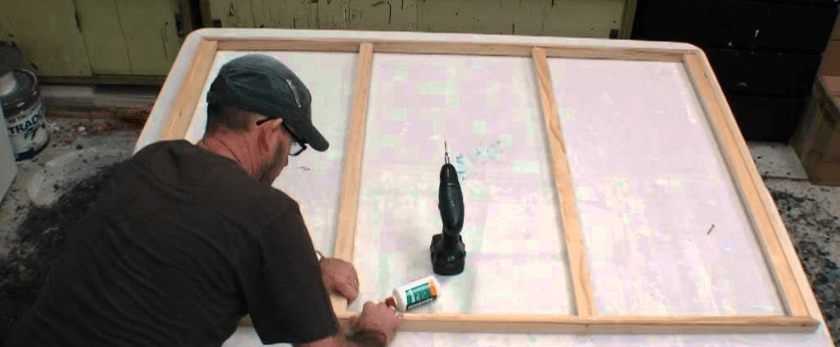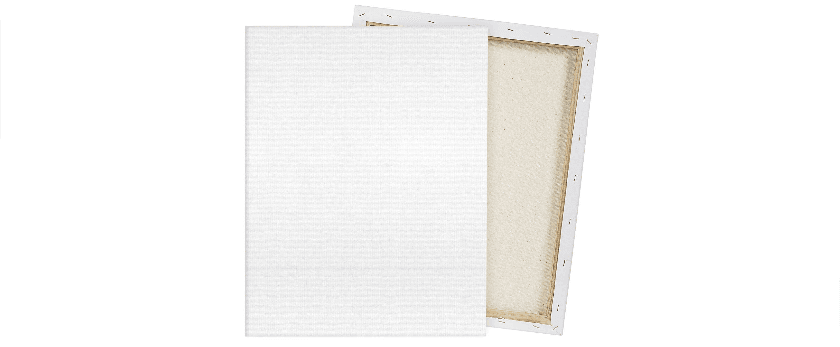As we become more aware of the impact our actions have on the environment
It's important to find ways to reduce our carbon footprint and live a more sustainable lifestyle. One area where we can make a positive change is in our art supplies. Traditional canvases, made from cotton or linen, have a significant environmental impact due to the resources and energy required to produce them. However, there is a simple solution that not only reduces our environmental impact but also allows for more creativity and personalization: making our own canvases.
In this article
- The negative effects of traditional canvases on the environment
- The benefits of making your own canvases
- A step-by-step guide on how to make your own sustainable canvases
Why Traditional Canvases are Bad for the Environment
Traditional canvases are typically made from cotton or linen, which are resource-intensive crops. Cotton, in particular, requires large amounts of water, pesticides, and fertilizers to grow. These chemicals not only harm the environment but also pose health risks to farmers and workers. Additionally, the production of cotton and linen fabrics involves energy-intensive processes, such as spinning, weaving, and dyeing, which contribute to carbon emissions and pollution.
Once the canvas is made, it is then stretched over a wooden frame, which is often made from unsustainable sources such as old-growth forests. This further contributes to deforestation and habitat destruction.
Furthermore, traditional canvases are often treated with chemicals to make them more durable and resistant to water and UV rays. These chemicals can be harmful to the environment and our health, especially when disposed of improperly.
Overall, the production and disposal of traditional canvases have a significant negative impact on the environment, making them an unsustainable choice for artists.
Why Making Your Own Canvases is Better for the Environment
Making your own canvases not only reduces your environmental impact but also allows for more creativity and personalization. By using sustainable materials and methods, you can create a canvas that is unique and tailored to your needs.
One of the main benefits of making your own canvases is the use of sustainable materials. Instead of using cotton or linen, you can opt for more eco-friendly options such as organic cotton, hemp, or bamboo fabric. These materials require less water and pesticides to grow, making them a more sustainable choice.
You can also choose to use recycled materials for your canvas, such as old bed sheets or clothing. This not only reduces waste but also gives new life to old materials.
Another benefit of making your own canvases is the ability to customize the size and shape. Traditional canvases come in standard sizes, but by making your own, you can create a canvas that fits your specific needs and vision.
Additionally, making your own canvases allows you to avoid the use of harmful chemicals. You can choose to leave your canvas untreated or use natural alternatives such as beeswax or plant-based sealants.
Overall, making your own canvases is a more sustainable and creative option for artists, and it also allows for a more personal touch in your artwork.
What You Will Need
To make your own sustainable canvases, you will need the following materials:
- Sustainable fabric (organic cotton, hemp, bamboo, or recycled materials)
- Wooden stretcher bars or a wooden frame
- Staple gun or hammer and nails
- Scissors
- Measuring tape
- Pliers (optional)
- Gesso (optional)
- Natural sealant (optional)

Step-by-Step Guide to Making Your Own Sustainable Canvases
-
Measure and Cut the Fabric: Start by measuring the size of your desired canvas and add a few inches to each side for stretching and stapling. Use a measuring tape to ensure accuracy. Then, cut the fabric to the desired size using scissors.
-
Stretch the Fabric: Lay the fabric on a flat surface with the wrong side facing up. Place the wooden stretcher bars or frame on top of the fabric, making sure they are evenly spaced. If using stretcher bars, use pliers to tighten the corners and secure the fabric in place. If using a frame, use a staple gun or hammer and nails to secure the fabric to the frame.
-
Trim Excess Fabric: Once the fabric is secured, trim any excess fabric from the edges, leaving about an inch of fabric around the frame.
-
Optional: Apply Gesso: Gesso is a primer that creates a smooth and durable surface for painting. If you prefer a smoother surface for your canvas, you can apply a layer of gesso to the fabric using a paintbrush. Let it dry completely before moving on to the next step.
-
Optional: Apply Natural Sealant: If you want to protect your canvas from water and UV rays, you can apply a natural sealant such as beeswax or plant-based sealant. Follow the instructions on the product for application and drying time.
-
Your Sustainable Canvas is Ready!: Congratulations, you have successfully made your own sustainable canvas! You can now use it for your artwork, knowing that you have made a positive impact on the environment.
Proper Disposal of Traditional Canvases
If you have traditional canvases that you no longer need, it's important to dispose of them properly to minimize their environmental impact. Here are a few options for responsible disposal:
- Donate them to a local art school or community center.
- Use them for other purposes, such as covering furniture or as drop cloths for painting projects.
- Recycle the wooden frame and stretchers.
- If the canvas is treated with chemicals, check with your local waste management facility for proper disposal methods.
In conclusion, making your own sustainable canvases is a simple and effective way to reduce your environmental impact as an artist. By using sustainable materials and methods, you can create unique and personalized canvases while also promoting a more eco-friendly lifestyle. So why not give it a try and see the difference it can make for the planet and your artwork?










